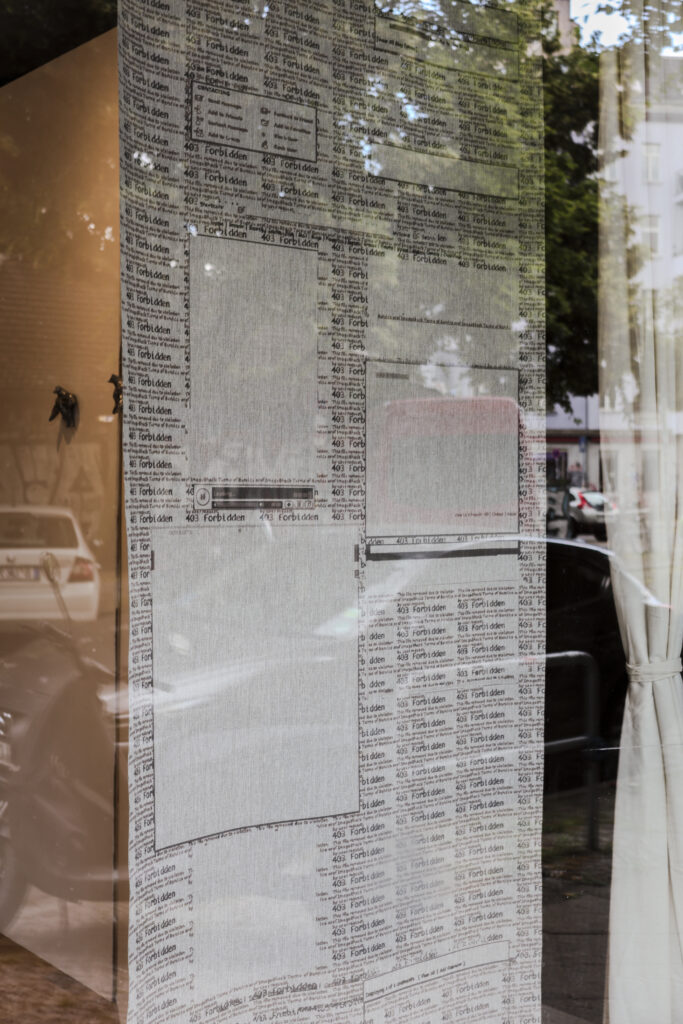The Condition of Digital Identity After Losing Access to a Social Media Profile
Research project funded by the Polish National Science Centre with a Preludium 23 grant no. 2024/53/N/HS2/02764

Contemporary digital identity is dispersed – existing simultaneously across multiple platforms. Each of our profiles is just a fragment of a larger whole, and only together do they form the image of the “digital self.” Losing access to one of them – whether through a ban, deletion, or the death of the account owner – is more than a technical problem. It resembles a metaphorical death: a part of our identity suddenly disappears from our reach, even though it still circulates as data.
The paradox is that our content continues to live its own life. Posts, photos, or comments may still be aggregated by bots, reused by algorithms, and resurfaced in new contexts, regardless of the author’s will. Digital identity therefore exists beyond us – fragmented and subject to recombination – raising questions about its coherence and its limits.
The project “The Death of the Avatar” investigates these situations: what they mean for the individual and how they reshape our understanding of identity. It analyzes archival interfaces of major social media platforms (from MySpace to TikTok). By tracing how users could share content over time, social media emerges as the framework within which cross-platform digital identity operates. A key element is a research survey, in which participants describe their connection to their accounts on different platforms and how losing one of them impacts the coherence of their overall identity. These reflections and emotions are further explored in workshops.
The project will culminate in a video game in which the player takes on the role of a digital entity trapped in a “digital purgatory.” With each lost fragment of identity, the protagonist gradually fades away, while their past content reappears in unexpected configurations – both authentic and AI-generated – containing materials that summarize the research. The game will be presented at a solo exhibition, alongside other works inspired by the project’s research.
“The Death of the Avatar” is an interdisciplinary attempt to capture what “life after life” looks like in digital space. It combines humanistic reflection, cultural critique, and artistic experimentation, showing that our profiles are not only tools of communication but also integral to contemporary notions of identity and memory.
Exhibitions, Artworks and Workshops
April 24, 2025 – At the international exhibition TRUCHŁO in Dług Gallery, Poznań, the project leader presented the first artistic work linked to the research.
♾️
metal urn, chrome paint, engraving, glitter, nano tape, foam, QR code with online content; 32 × 28 cm
The work explores digital identity and its afterlife in the context of late capitalism. Drawing on Jill Walker Rettberg’s concept of “computational selfhood,” it examines how human life is transformed into data – step counts, hours of sleep, GPS coordinates. This quotidian logbook, produced by devices and apps, is also an ephemeral “data exhaust,” dependent on corporate decisions and algorithms.
At its center is an urn resembling both a trophy and a consumer product. Inside is a QR code linking to a fictional platform offering “digital remembrance” services based on a deceased person’s online activity. The urn is filled with glittering “dust” – a metaphor for data. Using a conceptual conversion of 1 byte = 1 nanogram, the piece renders tangible the average individual’s digital footprint: around 300 grams, or 300 gigabytes.

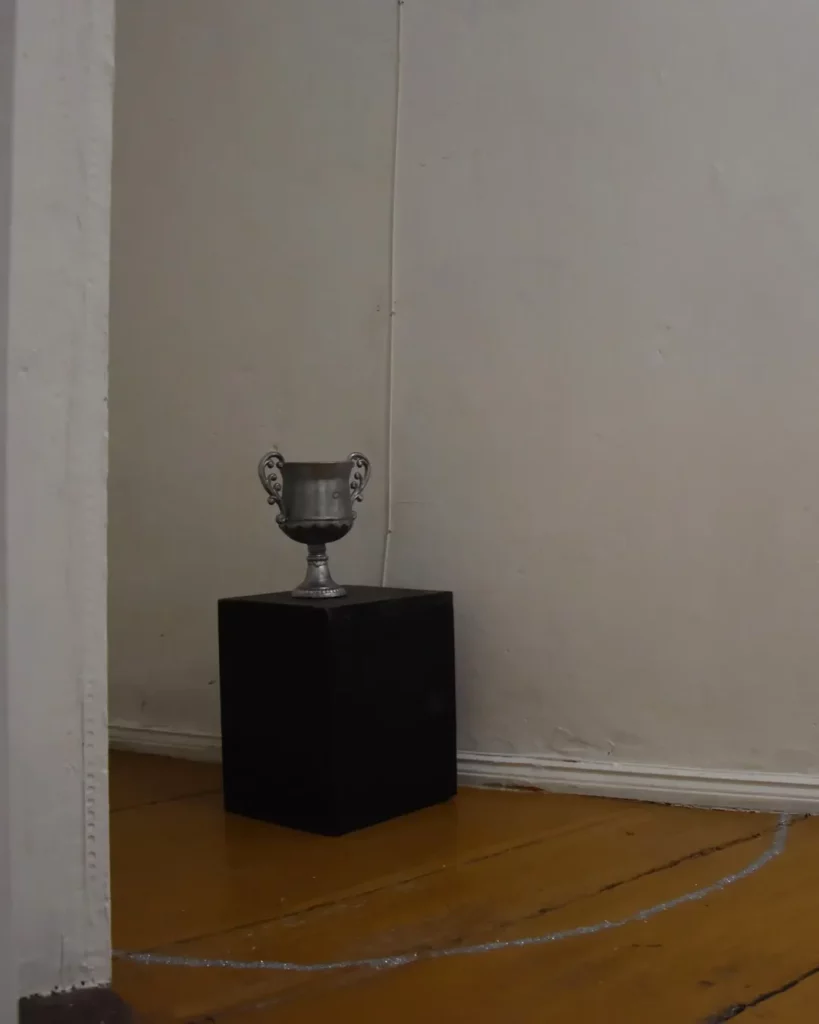
Exhibitions views from TRUCHŁO exhibition Ⓒ Dług Gallery
May 12, 2025 – The project’s first workshop took place at the Magdalena Abakanowicz University of the Arts in Poznań.
The session combined an artist talk, a discussion of Marta Ceccarelli’s Internet’s Dark Forests, and reflective exercises. Participants learned about the project’s aims, its first artworks, and the concept of the internet as a space of imaginaries and subcultures. They discussed the ephemerality of digital content and strategies of archiving. Personal reflections also surfaced about relationships with one’s own profiles and the emotions tied to losing them – from anger and sadness to distance and relief.
In the practical part, participants marked the dates they joined different social media platforms on a timeline and described situations in which they had lost access. Their accounts revealed how strongly memories and emotions are bound to digital traces – and how their loss impacts relationships and online identity.
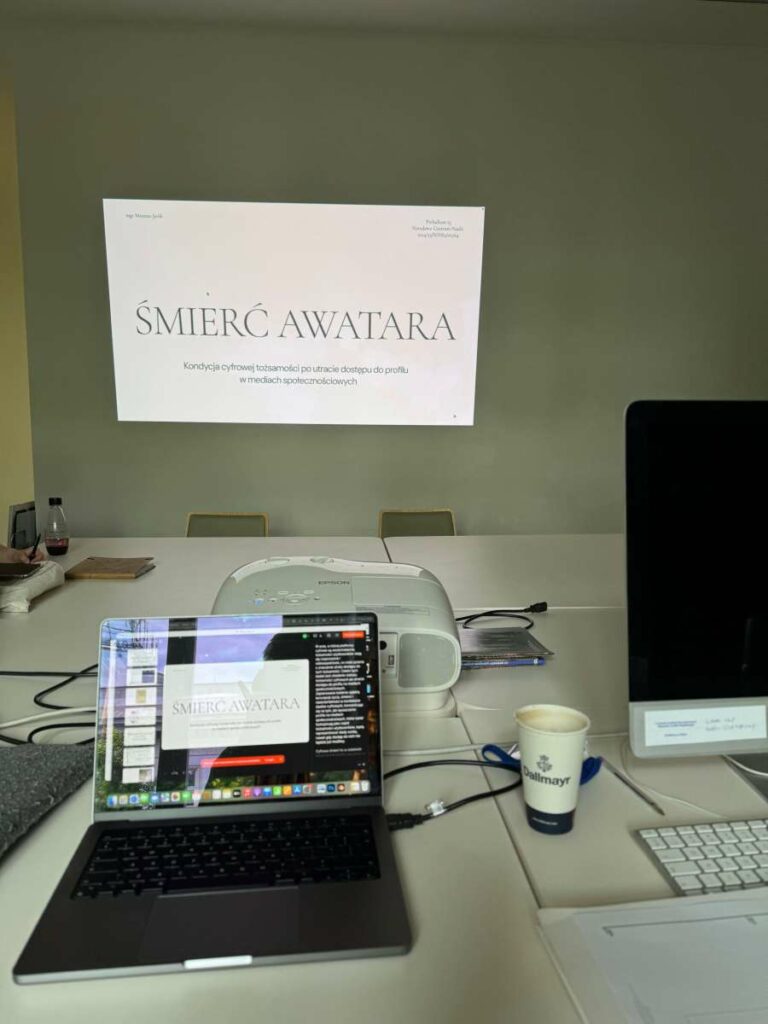
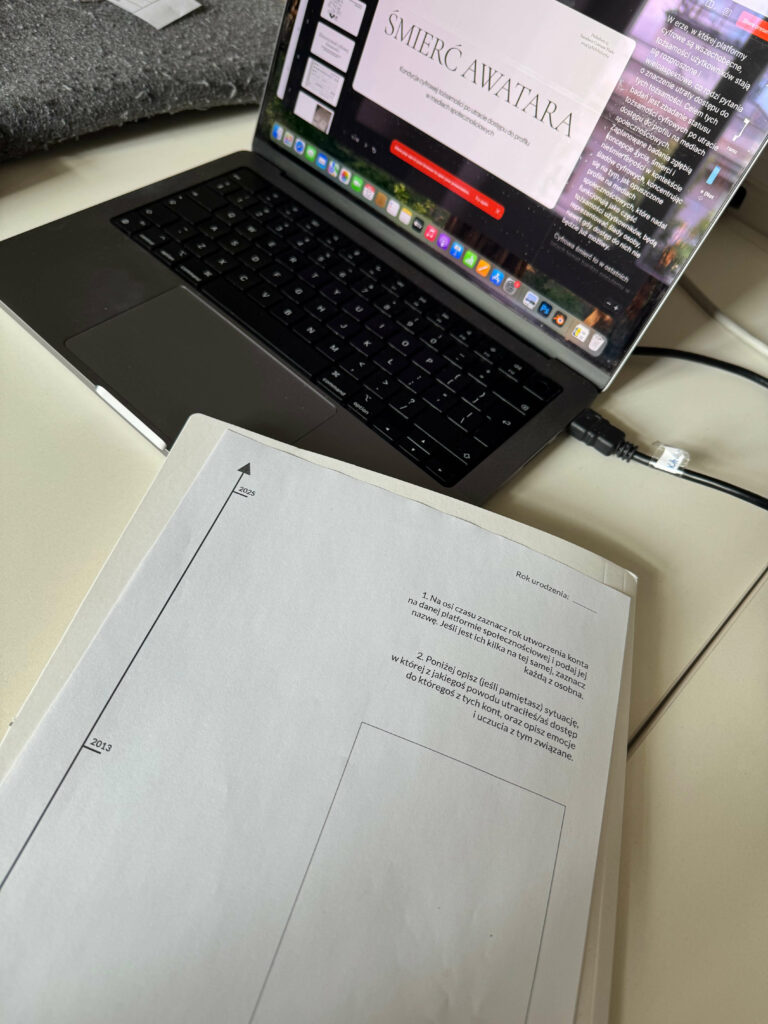
June 27, 2025 – At the festival 48 Stunden Neukölln in Berlin, the exhibition Feed your page (curated by Maria Blanka Grzybowska) featured the premiere of two further works created within the project. About the exhibition: https://48-stunden-neukoelln.de/en/programm/feed-your-page
The Death of Sincerity
nitro transfer, cyanotype, engravings on 4 metal plates, 50 × 50 cm each
This work addresses the “epidemic of irony” in internet culture. Inspired by a now-deleted Tumblr post by Ethel Cain, it points to how every online utterance must function like a meme – ironic, indirect, performative – leaving no space for sincerity.
To explore this tension, I used This Meme Doesn’t Exist, an AI tool trained on nearly a million memes, producing absurd, meaningless results. I subjected them to “deep-frying” – compression, distortion, degradation – then transferred them onto metal plates using nitro solvent and cyanotype staining. The result: toxic relics, material residues of ephemeral meme culture.
Their garish surfaces recall the triangle-background aesthetic of early 2000s memes, creating a full cycle from birth to visual decay. Engraved texts reference “edgelord” internet culture – provocation, irony, detachment – which, as scholars Chloë Arkenbout and Idil Galip note, not only exposes absurdity but also highlights the failures of AI and the fragility of narrative authority online.
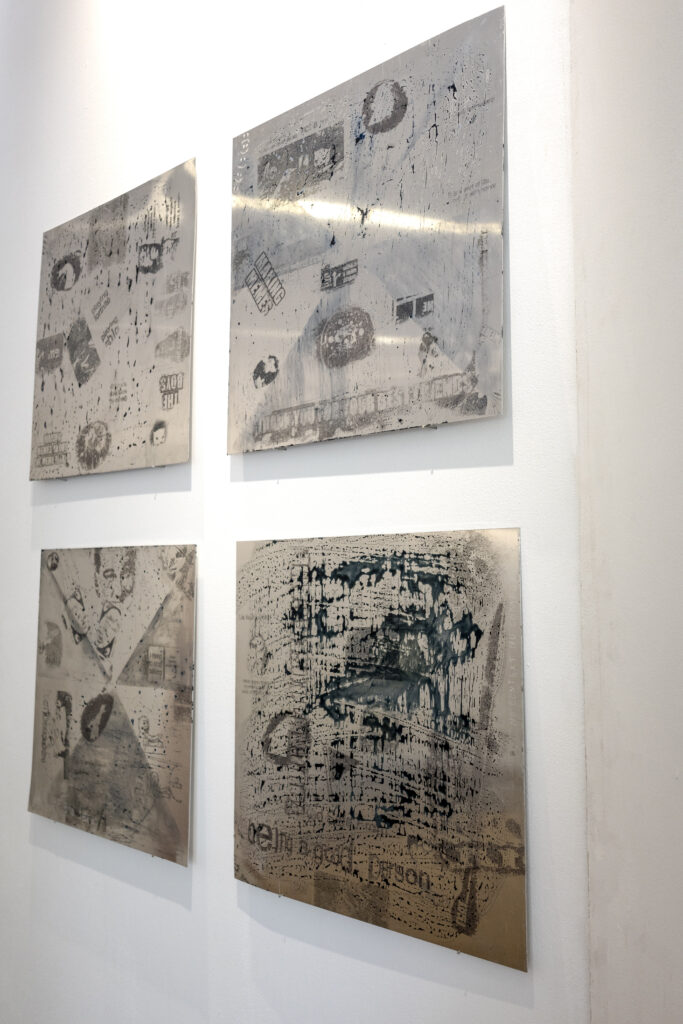

Farewell
UV printing on synthetic linen, 84 × 270 cm
During archival research on the Internet Archive, I encountered a 2007 MySpace profile where many assets had vanished, replaced with the message “403 Forbidden.” In Farewell, I transformed these screenshots into vector graphics, stripping them of visible data and anonymizing the user. The composition was UV-printed onto synthetic linen at the scale of the Shroud of Turin (84 × 270 cm), evoking endless scrolling as both ritual and residue.
The work highlights the paradox of digital identity: never fully ours, never entirely lost. It persists as spectral data – copied, recombined, and reanimated by non-human algorithms, beyond our control.
